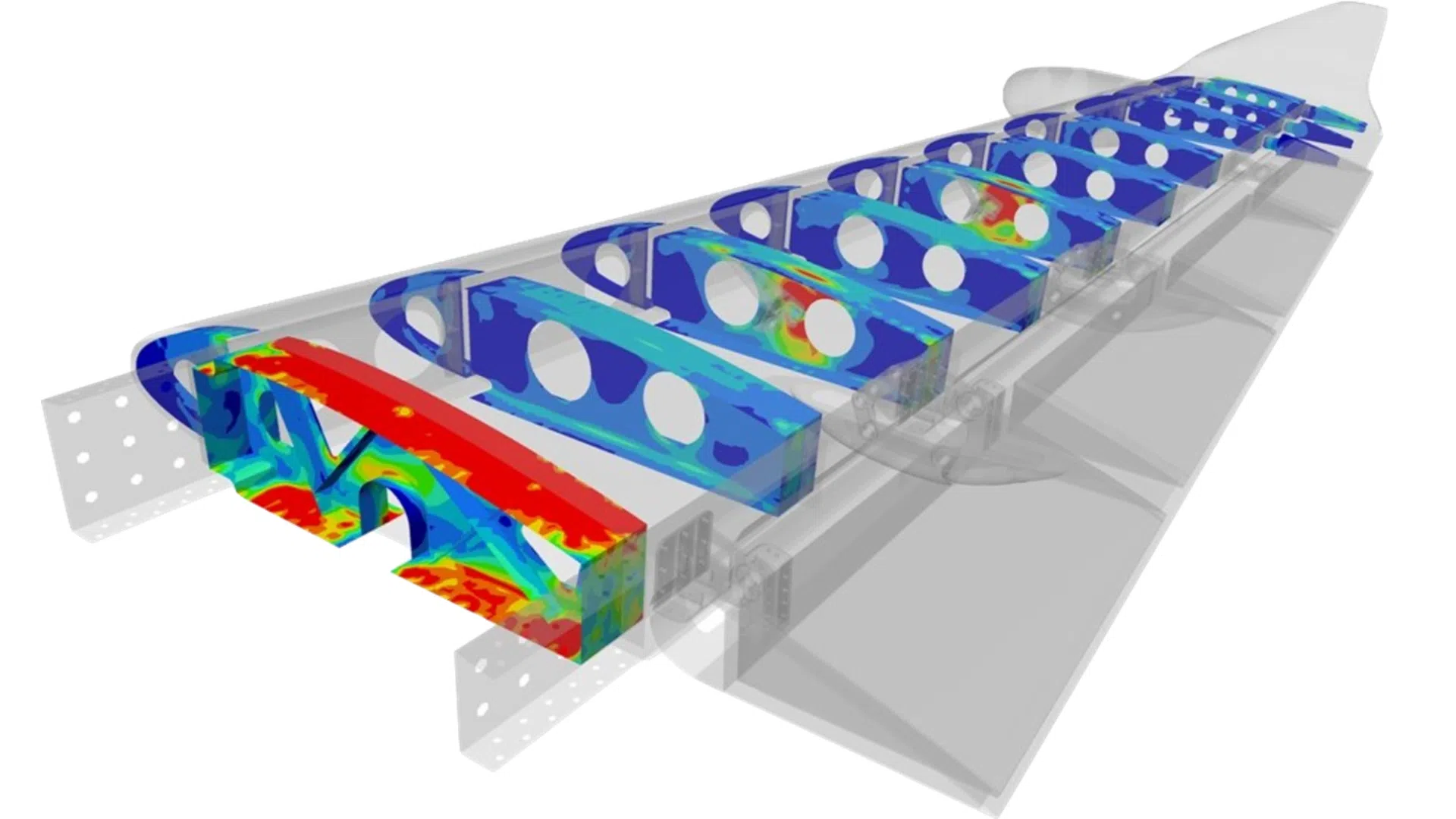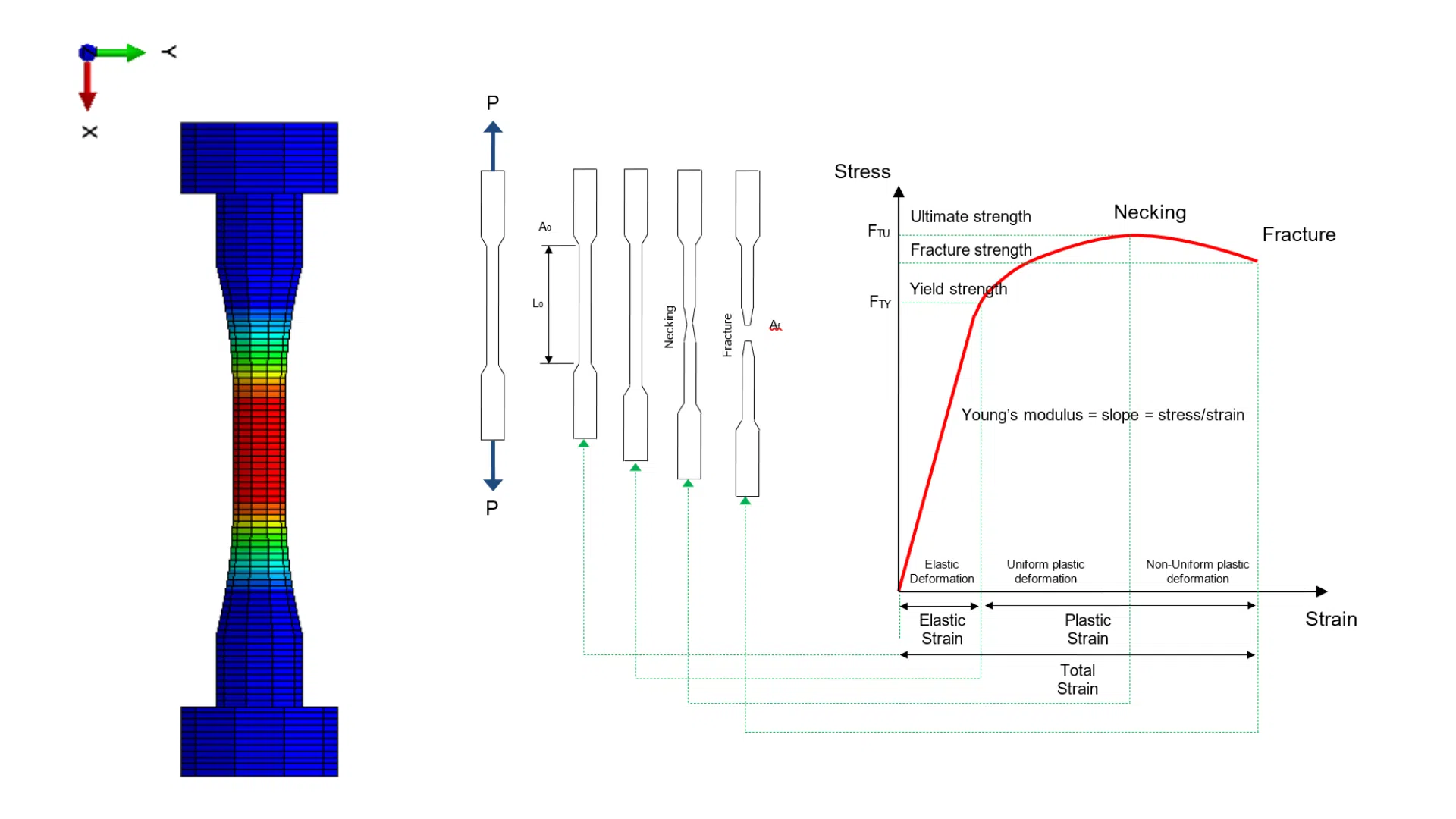Today we begin our series of posts related to the Finite Element Method for structural analysis. On the Internet can be find a large quantity of articles related to this method, both in terms of theoretical definition and use with commercial software such as Nastran, Abaqus, Ansys, … The number of bibliographical references is also huge, however, the number of references related to the practical application of the method is very small.
With these posts we intend to make public all information that could be useful in the application of the Finite Element Method for real industrial projects. This information is based on our more than 15 years of experience working with the method, as well as applied standards and recommendations from different industries (mainly aeronautical and automotive). These posts do not follow a chronological order, like the definition of any Finite Element Model or FEM training course.
Finite element type for linear and non-linear structural analysis
This first post is focused on the selection of elements for linear analysis (static and dynamic) and non-linear analysis (material, contact and large displacement) for MSC. Nastran and Abaqus Standard FEM codes:
MSC. Nastran
Linear Static and Dynamic Analysis (SOL 101, 103, 111, 112, 146)
- Beam models: CROD (traction-compression), CBAR or CBEAM (bending, constant section)
- Shell models: CQUAD4. CTRIA3 elements only for transitions or when the geometry does not allow CQUAD4
- Shear plates: CQUAD4 / MAT2 (including G33 only) only with MID1 entry, and adding a CROD frame
- Membrane behaviour: CQUAD4 with only MID1 entry
- Membrane + bending behaviour: CQUAD4 + full PSHELL
- 3D Solid Model:
- CHEXA8 (minimum 4 elements throughout the thickness)
- C3D10 for complex geometries (without projection of the intermediate nodes to the geometry edges/faces)
Linear buckling (SOL 105)
- Beam models: CROD (traction-compression), CBEAM o CBAR (bending, constant section), without Offset
- Shell Models: CQUAD4, without Offset.
- 3D Solid Model:
- CHEXA8, CHEXA20
- C3D10 for complex geometries (without projection of the intermediate nodes to the geometry edges/faces)
Abaqus Standard
Linear Static and Dynamic Analysis
- Beams: B32
- Shells: S4 element
- Solids:
- C3D8 (minimum 4 elements throughout the thickness)
- C3D8I for very regular mesh
- C3D10 for complex geometries (without projection of the intermediate nodes to the geometry edges/faces)
Buckling
- Shells: S4 element
- Solids:
- C3D8 (minimum 4 elements throughout the thickness)
- C3D8I for very regular mesh
- C3D10 for complex geometries (without projection of the intermediate nodes to the geometry edges/faces)
Bending
- Shells:
- S4 element for out-of-plane bending
- S8 for bending in the plate plane (to avoid shear locking)
- Solids
- C3D8I element for very regular mesh;
- C3D20 Element
- C3D10 for complex geometries (without projection of the intermediate nodes to the geometry edges/faces)
Contact models without bending
- Shells: S4 element
- Solids:
- C3D8 Element
- C3D10 for complex geometries (without projection of the intermediate nodes to the geometry edges/faces)
Contact models with bending
- Solids: C3D8I for very regular mesh;
Fracture Simulation:
- Stress Intensity Factor – SIF:
- J Integral:
- Plane Stress: CPS8
- Solids: C3D8
- XFEM
- Solids: C3D8
- J Integral:
- Crack Growth – XFEM
- Plane Stress: CPS4
- Solids: C3D8


